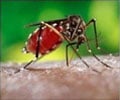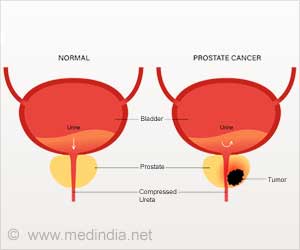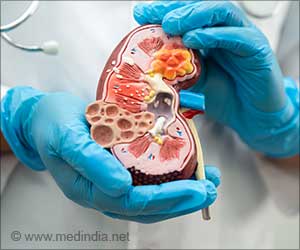University of the Witwatersrand scientists along with Namibian, UK and US partners have shown how the smart application of existing interventions can reduce the transmission of malaria.

‘Reactive focal mass drug administration and reactive focal vector control, when implemented alone and in combination, significantly reduced malaria transmission in endemic areas.’
Read More..




This scenario in Namibia is in many ways typical in neighbouring South Africa's malaria endemic districts.Read More..
In a Global South and Global North collaboration, scientists at the WRIM at the University of the Witwatersrand in South Africa; the University of Namibia with the Namibia Ministry of Health and Social Services; the London School of Hygiene and Tropical Medicine; the University of California, San Francisco; and the University of Texas, Southwestern conducted this first ever randomized controlled trial of its kind.
"The reduction in cases was achieved using existing tools, namely anti-malarial drugs and insecticides, but deploying these in a 'smart' way, i.e., in close proximity of newly reported cases," says Professor Immo Kleinschmidt, one of the Principal Investigators in the project, Honorary Professor in the Wits School of Pathology and Professor of Epidemiology in the Department of Infectious Disease at the London School of Hygiene and Tropical Medicine.
"Our results are derived from a community randomised controlled clinical trial. This means that the effects of the interventions are compared between groups that are similar in all respects apart from the intervention they are receiving. The findings are therefore very unlikely to be due to chance, and the conclusions are more robust than they would have been from an observational study."
Co-authors Lizette Koekemoer, WRIM Research Professor and an honorary member in the Centre for Emerging Zoonotic and Parasitic Diseases at the National Institute for Communicable diseases, and Erica Erlank, WRIM Associate Researcher, provided training and support in entomology [the study of insects] during the trial.
Advertisement
In this study, researchers conducted a trial to evaluate the effectiveness and safety of two interventions: (i) reactive focal mass drug administration (rfMDA) and (ii) reactive focal vector control (RAVC), and their combination.
Advertisement
The study took place in the Zambezi Region, northern Namibia, and targeted people that were at the highest risk of malaria infection based on their proximity within 500 meters of malaria index cases that emerged during the transmission season.
In one arm of the trial, these neighbours of any new malaria case were offered a standard dose of the anti-malarial drug Coartem®, without first testing whether these neighbours carried the parasite that causes malaria. This drug clear them of parasites even if the level of parasites they carried were below the density that can be detected by the standard rapid diagnostic test. The drug would also provide a short period of protection against new infections.
In another arm of the trial, neighbours of index cases had the interior walls of their houses sprayed with a highly effective insecticide, Pirimiphos-methyl, irrespective of whether or not their houses had previously been treated in the annual spray carried out routinely in such areas.
In the randomized trial, communities received either the drug, the house spray, the drug and the house spray, or neither of these interventions.
Both the drug and the house-spraying interventions were shown to be safe and highly effective, either on their own or when administered together. Both the drugs and the house-spraying approaches significantly reduced malaria transmission in this low endemic setting.
WHY THIS TRIAL MATTERS
Mass drug administration (MDA) is the administration of antimalarial drugs to target the parasite reservoir in humans, without necessarily testing if those people carry the parasite that causes malaria.
The World Health Organization recommends MDA for the elimination of the Plasmodium falciparum malaria parasite. However, the effort and cost required to implement MDA on a large scale can be challenging.
The Namibian study reduced the 'mass' in MDA by targeting just the small ring of people around recent index cases - the people at the highest risk of malaria - and thus implemented an existing intervention more efficiently and economically.
Indoor residual spraying (IRS) and the use of long-lasting insecticidal nets have since 2000 significantly reduced malaria cases and deaths in target populations in sub-Saharan Africa. These interventions are normally administered in a 'blanket' style before the malaria season (October to May).
The Namibian study targeted a highly effective but expensive insecticide, pirimiphos-methyl, at the small ring of houses around recent index cases. The cost of the insecticide makes it more difficult to use in blanket spraying, but suitable in focal spraying as smaller quantities will be used. The cost of the insecticide is thus offset by its focal use of targeting only high risk populations.
"We found that reactive focal mass drug administration and reactive focal vector control, when implemented alone and in combination, significantly reduced malaria transmission among targeted populations in the Zambezi region of Namibia," says Koekemoer. "Furthermore, the two interventions, when used in combination, had an additive effect - reducing rates of new malaria cases by 75%".
TOWARDS ZERO TRANSMISSION TARGETS
Although malaria still causes an estimated 230 million cases and over 400 000 deaths each year, dramatic success in fighting the disease over the last two decades has inspired many countries to commit to eliminating transmission altogether.
To date, the World Health Organization has certified 38 countries and territories malaria-free. In southern Africa, eight countries - including South Africa and Namibia - have made the elimination of malaria a policy goal.
In recent years, however, progress towards eliminating transmission has slowed in many regions including Africa, highlighting the need for new approaches. Where malaria cases have been reduced to low levels, transmission still occurs due a reservoir of chronic, low density infections in people without symptoms. This means that these infections are largely undetectable through standard surveillance approaches.
Because the mosquitoes that carry the malaria parasite are still present, these infections may seed further infections in their immediate neighborhood, potentially leading to outbreaks of malaria cases. To prevent such outbreaks from leading to wider epidemics, effective focal responses that target high-risk populations, such as those assessed in the Namibian study, need to be mobilized.
While additional studies will help determine the optimal scenarios in which these approaches could be implemented, the Namibian study suggests that reactive focal mass drug administration and reactive focal vector control can be applied in other countries that (i) have Plasmodium falciparum parasite-carrying mosquitos (ii) are close to eliminating transmission and (iii) have good case reporting systems.
"These approaches can only be used if index cases are promptly and reliably reported and becauseSouth Africa has a responsive and reliable malaria case reporting system, the country is well placed to take advantage of these interventions," says Koekemoer.
The Namibian study shows how tailoring and targeting existing interventions can help improve their effectiveness and contribute to the elimination of malaria transmission permanently.
Source-Eurekalert









